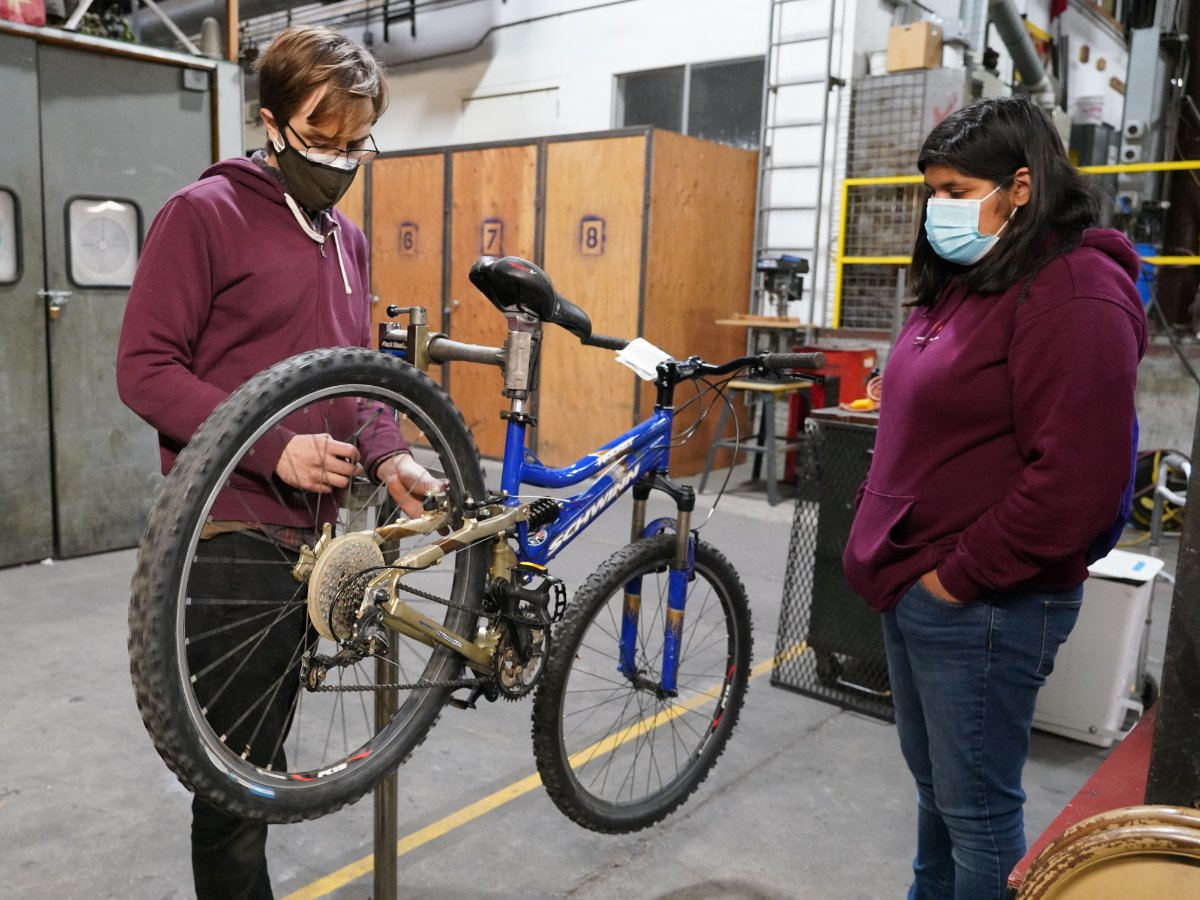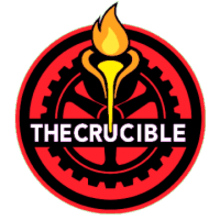BikesMachine
Bike Maintenance Guide
By Kristin Arzt
Bike Maintenance Guide
The Crucible’s Bike Shop has been running for over a decade in West Oakland and provides training and support to our community with expert bike maintenance. Our recently expanded Bike Shop provides free monthly Bike Fix-A-Thon events for our community and regular free Earn-A-Bike programs for youth ages 10-18. Each year, over 160 bikes were repaired for free during four community Bike Fix-A-Thons with 500 volunteer and staff hours helping 160+ community members regain access to safe and reliable transportation.
The Crucible also offers repair and maintenance classes for youth and adults. Whether you want to learn the basics of a tune-up or tig weld your own bike from the ground up, The Crucible has you covered. Understanding bike maintenance and having a safe mode of transportation is more important than ever. Read on to learn how you can maintain your bike.
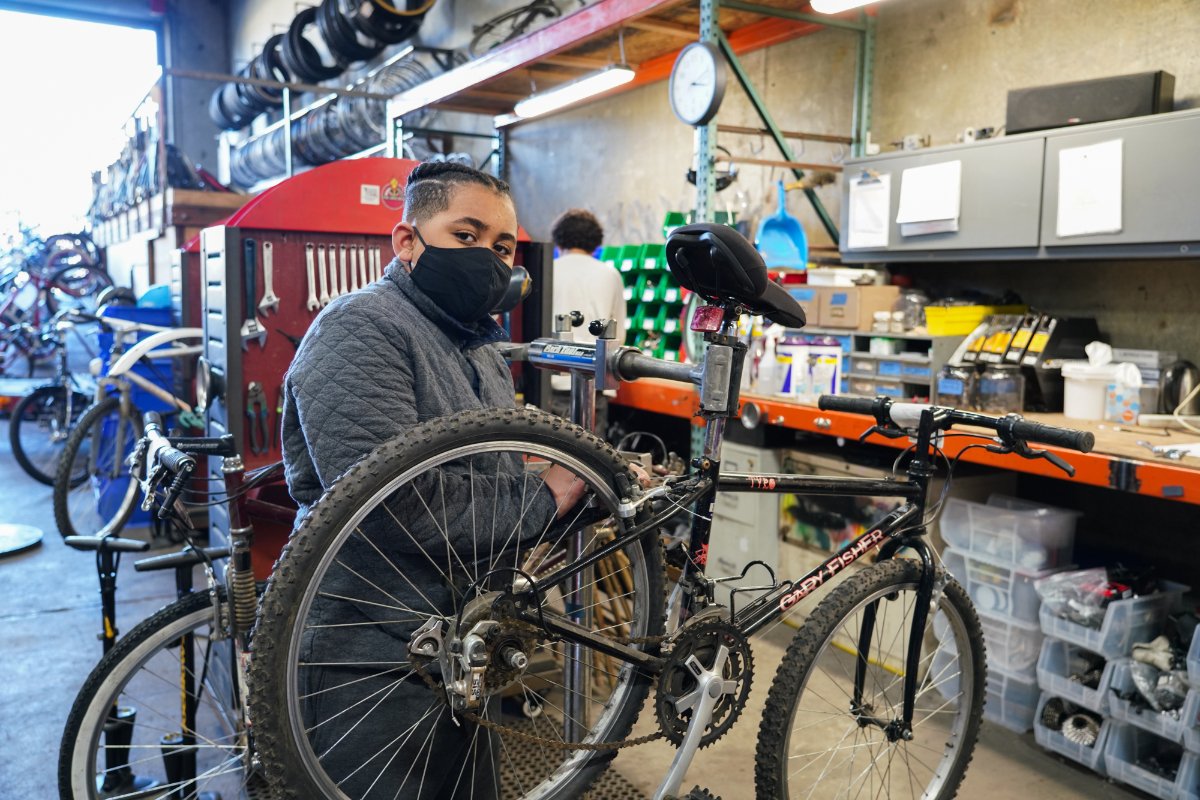
Understanding the basic mechanics of your bike
By educating yourself on the basic mechanics of your bike, you will be able to ensure your own safety and ease when riding. You will not be able to maintain your bike if you do not know how it works.
Chains & Cog
A bike chain drives the rotation of the pedals from one cog to the next, which are attached to the rear wheel. The chain also interacts with the derailleur that aligns it with a given gear. Bike chains are made of pairs of steel plates and plates that are held together by rivets. A cog set is a collection of different sized gears that allow your bike to run in different gear ratios, allowing for more or less torque.
Derailleurs
Derailleurs apply variable tension to the chain, allowing it to move between gears. Shifters apply variable tension to the cable attached to the derailleur, which moves the derailleur, which then moves the chain from gear to gear. It quite literally just shoves the chain from gear to gear.
Tires & Wheels
A bike wheel translates the applied force of the rider’s energy or momentum. The front wheel is steered and the back wheel is driven. Wheels are normally steered in front, and the rear-wheel is driven in the back. The wheels receive the friction of braking, resisting rotation.
Bike tires come in two main styles: road bike and mountain bike tires. Road bike tires are usually thin, highly pressurized with minimal thread for faster, city riding. Mountain bike tires have lower pressure, wide, and have thick tread. A tire is sized to fit a certain type of wheel rim, which in turn dictates the type of tube that you need.
Frames & Forks
A bike frame essentially comes down to the frame build and material it is made of. Common materials that makeup frames are steel, carbon fiber, aluminum, many alloys, and other composites. The design of a bike frame dictates the forward inertia of your bike. The design of a bike frame can be customized to the type of terrain you want to traverse and how fast you would like to go. Forks can be found on the front of the bike. The fork’s purpose is to connect the front wheel to the frame and direct the steering from the handlebars.
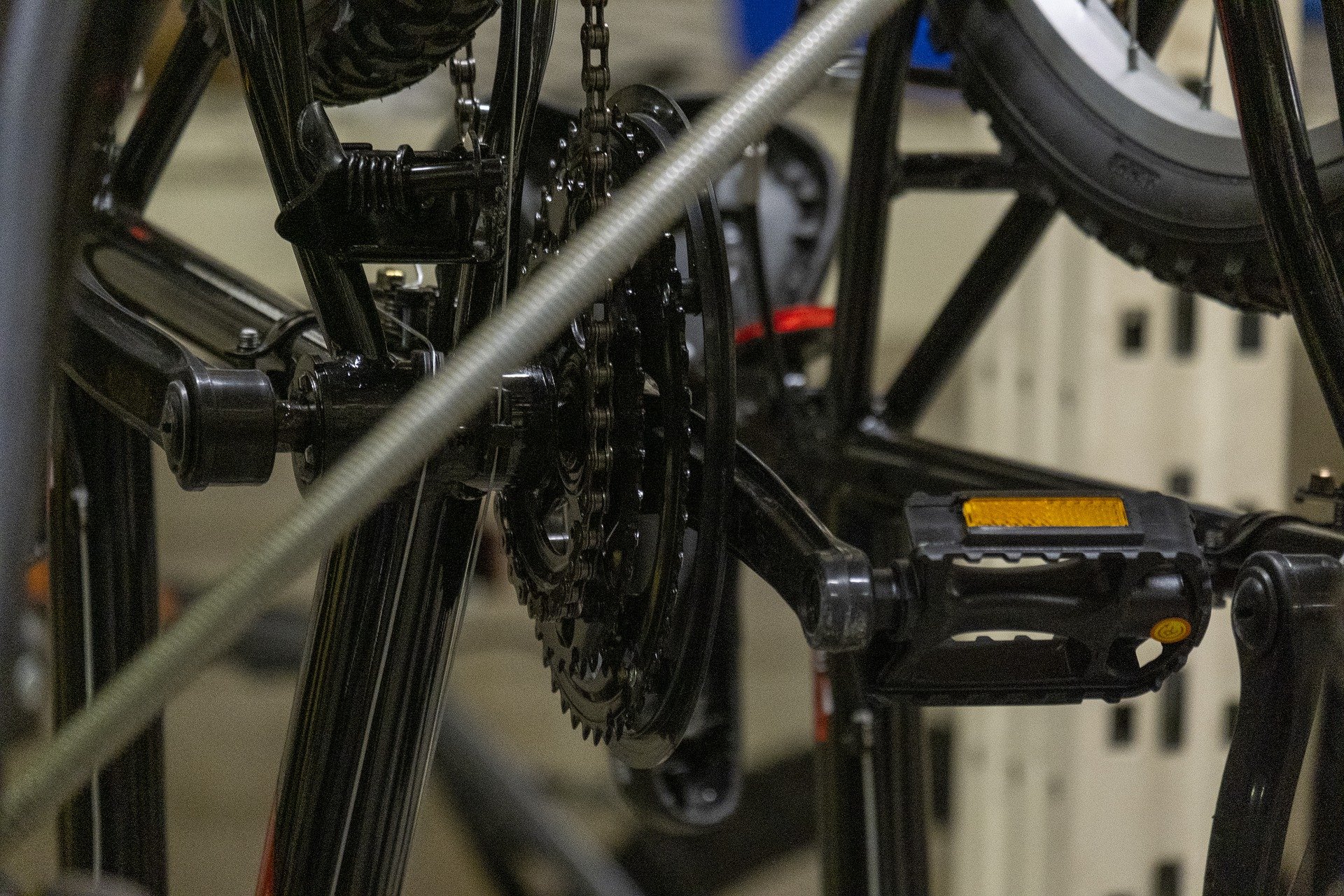
Pre-ride inspections
When selecting a bike, make sure the bike fits you and you are comfortably able to stand over your bike. Ideally, your seat height will be at a point that when your foot is at full extension of the pedal, your knee still has a slight bend to it. You will also want to make sure that your handlebars are perpendicular to the path of the front wheel.
Checking tire pressure
The tire will have the suggested inflation pressure printed on it. Connect your tire to a bike pump. Know if your valve is a Presta or Schrader, and which pump attachment is appropriate for your valve type. For more precise information, you can also connect a pressure gauge to the valve.
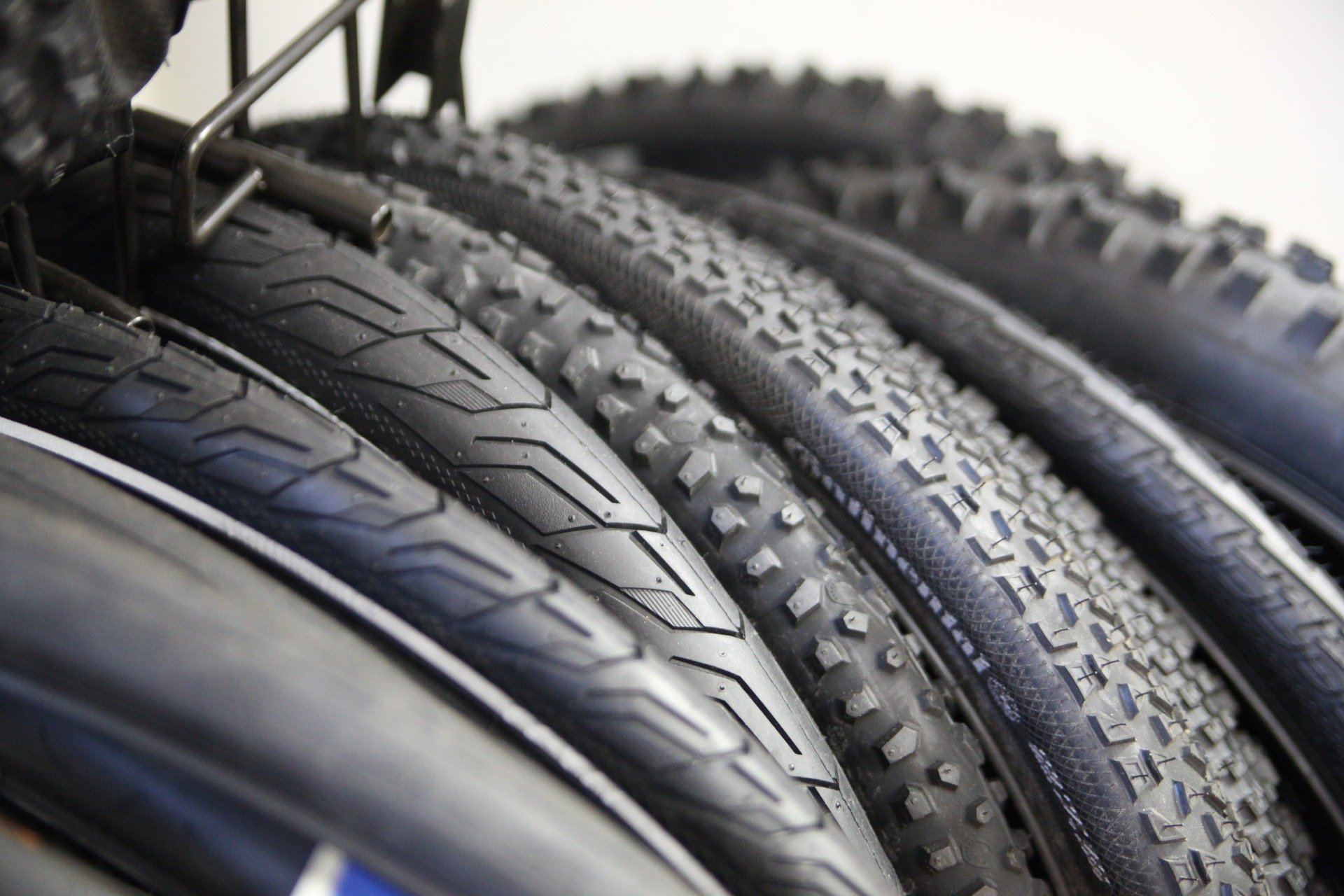
Checking your brakes
Make sure that your brakes are able to engage and hold the wheel firmly when not in motion, as well as release the wheel when you are ready to ride. Ensure that your brake cables are secured to the frame inside of protective housing and run from your brake levers to the calipers or discs.
Inspecting your chain & derailleurs
Check your chain for rust and stay on top of chain care by keeping it clean and lightly oiled. Excess dirt and water will promote rust which will wear out both the chain and your gears. Turn your bike upside down and alternate between the extremes of your gear set, while turning the wheel. This will show you if your derailleur is set well. If you notice your chain falling off of the gear set, adjust the limit screws to adjust both the maximum and minimum movement
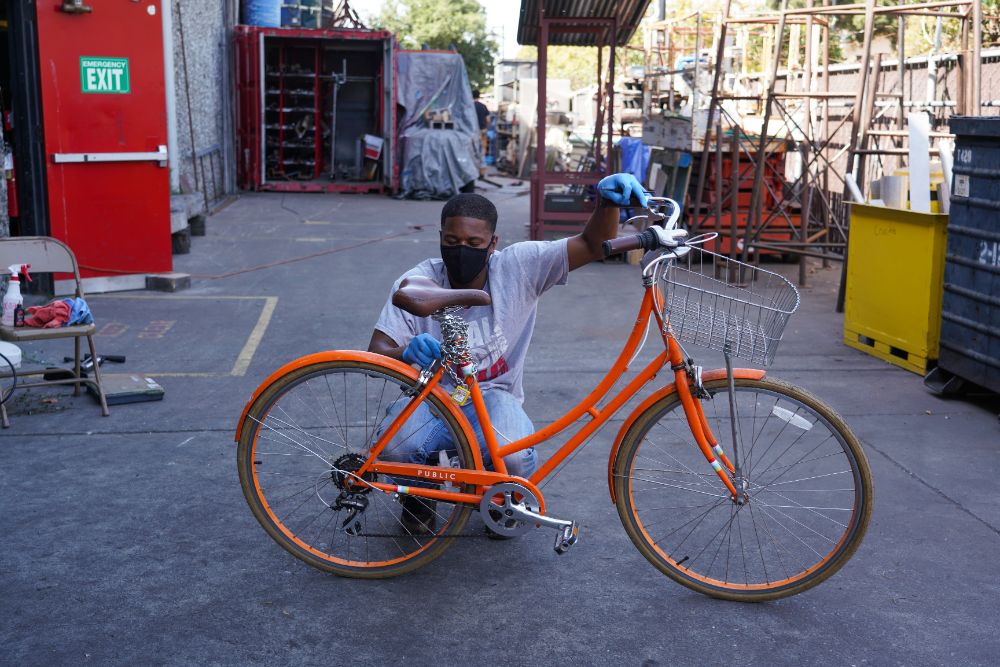
How to perform basic bike maintenance
Performing basic bike maintenance will keep you from running into issues on the road. Keep an eye on basic functioning parts and address any issues immediately.
Learn more about bike mechanics at The Crucible!
Classes in The Crucible’s Bike Shop help keep your ride on the road—whether it’s a pedal bike you use for everyday transportation, or an art bike or car you are inspired to create. If it has wheels and pedals, you can learn from the pros how to trick it out and keep it running in top condition! In our Bicycle Maintenance class, you can learn how to perform a complete tune-up on your own bicycle. In class, our skilled faculty guide you through disassembling and reassembling the entire bike, learning the name of each part and how to efficiently maintain your bike.
